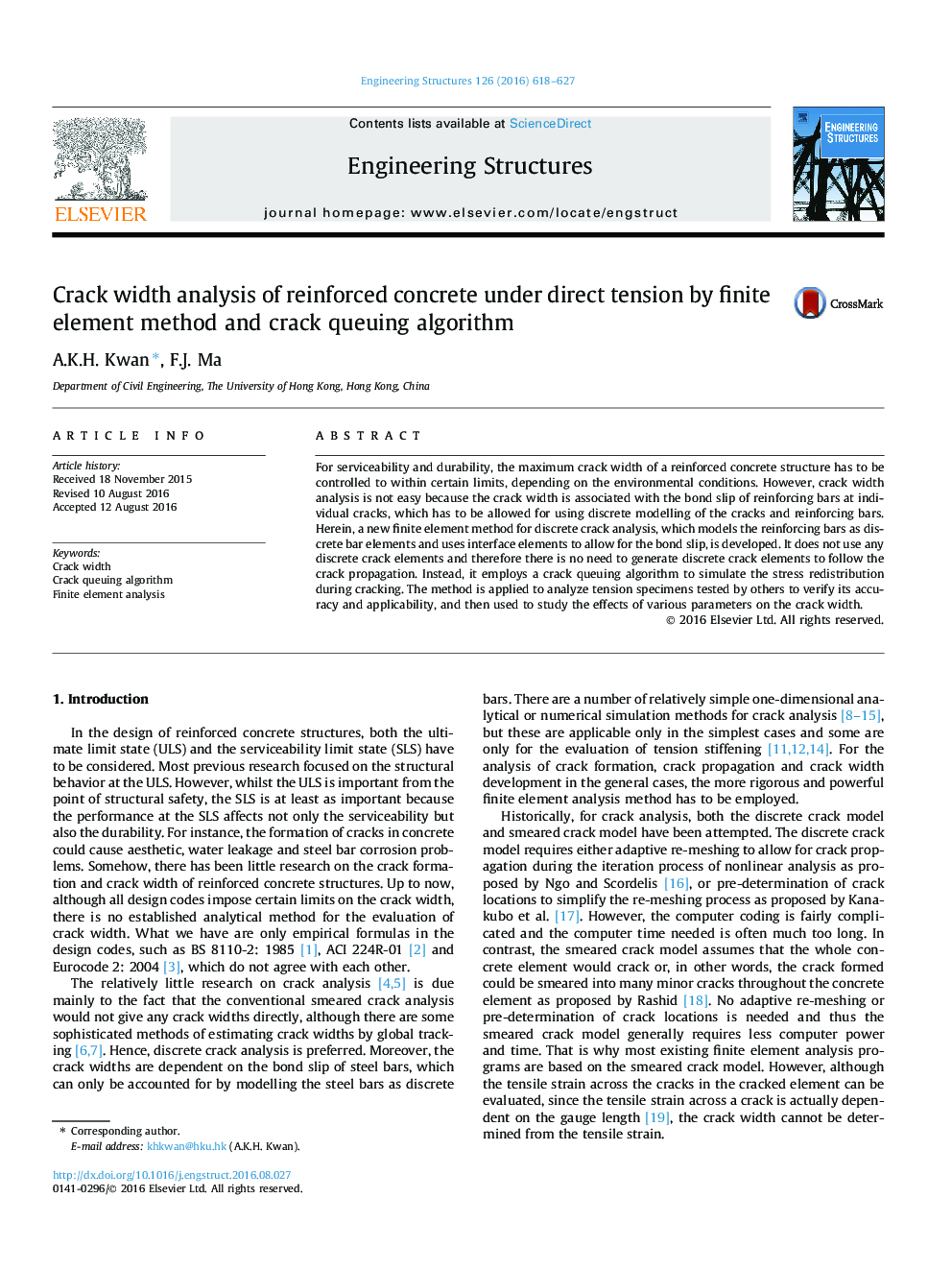| Article ID | Journal | Published Year | Pages | File Type |
|---|---|---|---|---|
| 4920792 | Engineering Structures | 2016 | 10 Pages |
Abstract
For serviceability and durability, the maximum crack width of a reinforced concrete structure has to be controlled to within certain limits, depending on the environmental conditions. However, crack width analysis is not easy because the crack width is associated with the bond slip of reinforcing bars at individual cracks, which has to be allowed for using discrete modelling of the cracks and reinforcing bars. Herein, a new finite element method for discrete crack analysis, which models the reinforcing bars as discrete bar elements and uses interface elements to allow for the bond slip, is developed. It does not use any discrete crack elements and therefore there is no need to generate discrete crack elements to follow the crack propagation. Instead, it employs a crack queuing algorithm to simulate the stress redistribution during cracking. The method is applied to analyze tension specimens tested by others to verify its accuracy and applicability, and then used to study the effects of various parameters on the crack width.
Keywords
Related Topics
Physical Sciences and Engineering
Earth and Planetary Sciences
Geotechnical Engineering and Engineering Geology
Authors
A.K.H. Kwan, F.J. Ma,
